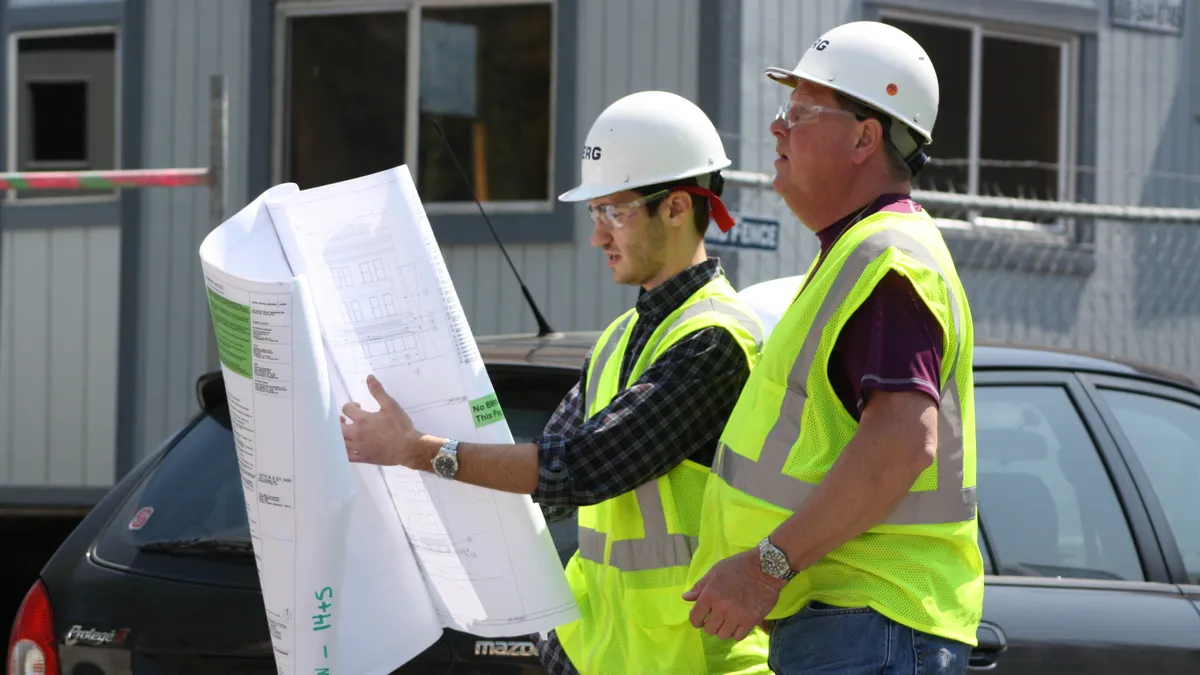Construction industry analysts have been banging the drum for a few years about skilled worker shortages in the U.S. In fact, last year an Associated General Contractors of America survey found that approximately 25% of construction companies had to turn down work because they did not have the necessary labor on hand.
The driving force behind this labor shortage was the industry-shattering Great Recession, which began in late 2007 and, according to Robert D. Dietz, vice president for tax and market analysis for the National Association of Home Builders, caused a mass exodus of construction workers.
"Coming out of the recession, the industry lost about 1.5 million payroll jobs, and, since the low point, we're up just a little more than a half a million positions," Dietz said.
However, times have changed, and demand in the construction industry is almost fully back on track. The Commerce Department released the latest construction spending numbers earlier this month, and the agency reported industry spending in October rose 1% to $1.107 trillion, its highest level in eight years.
The big news for many, though, is the recent activity in construction employment. According to the Bureau of Labor Statistics, construction unemployment in October was 6.2%, the same month the industry added 31,000 jobs, more than four times the job gains of the previous four months combined, according to the Associated Builders and Contractors.
Add to that the increase of 46,000 construction jobs in November, and many are left wondering — have we turned the corner on the struggle to find enough skilled labor to meet demand?
The start of something new?
The answer to that question is yes, but only for the very short-term, according to Brian Turmail, senior executive director of public affairs for the AGC.
"Clearly, during the last two months," Turmail said, "the data tells us that firms have all of a sudden had a much easier time finding workers to hire, which prompts the question of where are they finding them."
Turmail said the AGC member grapevine is buzzing with stories of workers leaving the softening energy and manufacturing sectors to either return to construction work or explore the opportunity for the first time.
"Over the summer we heard that many laid-off oil workers were hesitant to come back to construction or go into construction if they hadn’t worked there before, but we’re starting to hear that oil workers are beginning to realize that the (oil) jobs aren’t coming back right away," he said.
Dietz agreed and said, "Some of the competition from the energy sector has certainly slowed in some parts of the country, as the natural gas and fracking boom has slowed."
Rising compensation is also a factor in construction’s growing worker numbers, according to Turmail.
"Many of our firms tell us that they’ve been raising compensation levels, so that might be drawing more people in the industry who hadn’t previously considered construction," he said. "Or, construction firms have just adapted and found more aggressive ways to reach out to and recruit potential workers."
Regardless of the reason for the spike in construction employment numbers, most agree that, for the industry in general, finding enough skilled workers is still an ongoing concern, for now and in the future.
David Chapin, 2016 ABC chair and president of Willmar Electric Service, which has multiple offices throughout the Midwest, said, "When you talk to most ABC members and other people in the part of the country that I’m from, you get the same stories — 'We would sell more work if we could find more people.'"
However, Chapin added that even the November BLS figures aren’t game-changing because the ABC represents 21,000 companies, and, even if all 46,000 people went to work for ABC-member firms, that would only be two apiece.
Issue of top concern
Nevertheless, Chapin, Turmail and Dietz all agreed that the aging construction workforce is likely the most pressing issue in the industry.
"It does remain the case," Dietz said, "that the industry has to rebuild its infrastructure, and part of that story is rebuilding a workforce."
According to an NAHB Eye on Housing report, the latest Census data indicates the average age of construction workers, 42, exceeds the average age of the overall labor force, 41. In the report, the NAHB broke down worker ages by state, region and trade and found the oldest workers are located in the Northeast, parts of the Midwest and West and Florida, and occupy more managerial positions, such as construction supervisors and construction managers.
Chapin said he has heard from ABC members about their aging workforces, but he also has witnessed the problem in his own business. He said some areas of the country are worse than others, but there is a general apprehension about what’s going to happen when experienced, older works retire in the near future. He added that losing experienced estimators, salesmen and office staff is a concern as well.
"We do worry about how we’re going to replace that knowledge base," Chapin said.
What looms ahead
Turmail said, "There’s a short game and a long game. The short-term is to help our guys in the immediate crisis. But if you look at what’s in our workforce development program, we’re playing for the long game. We know that we need to take steps now that, months and years later, will pay off regardless of the direction of the economy."
The AGC’s workforce development plan focuses on technical school and career programs to increase the number of young people entering the construction industry.
Chapin said younger people oftentimes don’t consider the benefits of getting into the construction industry — including good pay and a portable career with longevity.
"The building of buildings and all the components that go inside of them — that’s not going to go away. It’s a pretty bright horizon for them in the long term," he said.





















